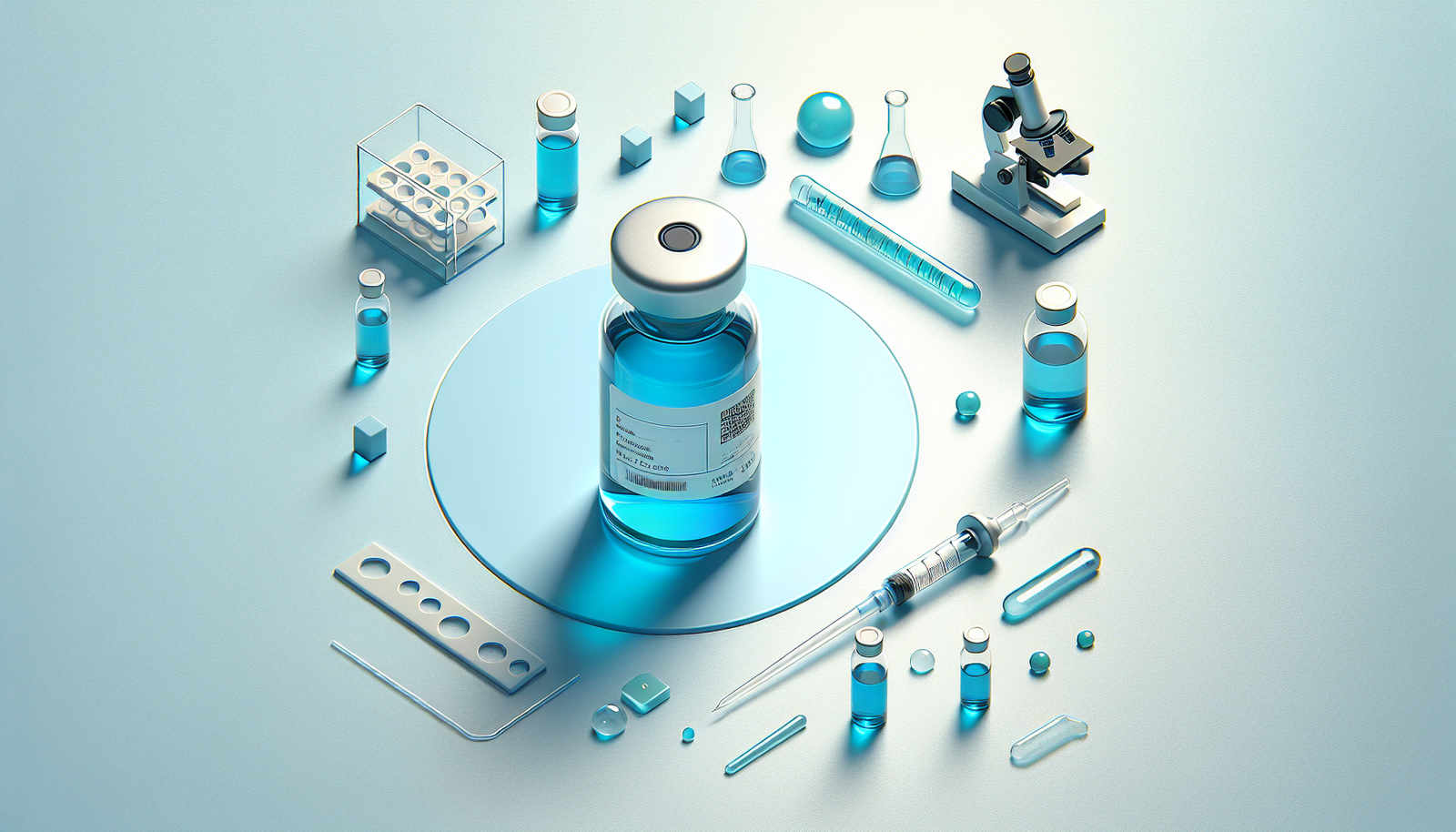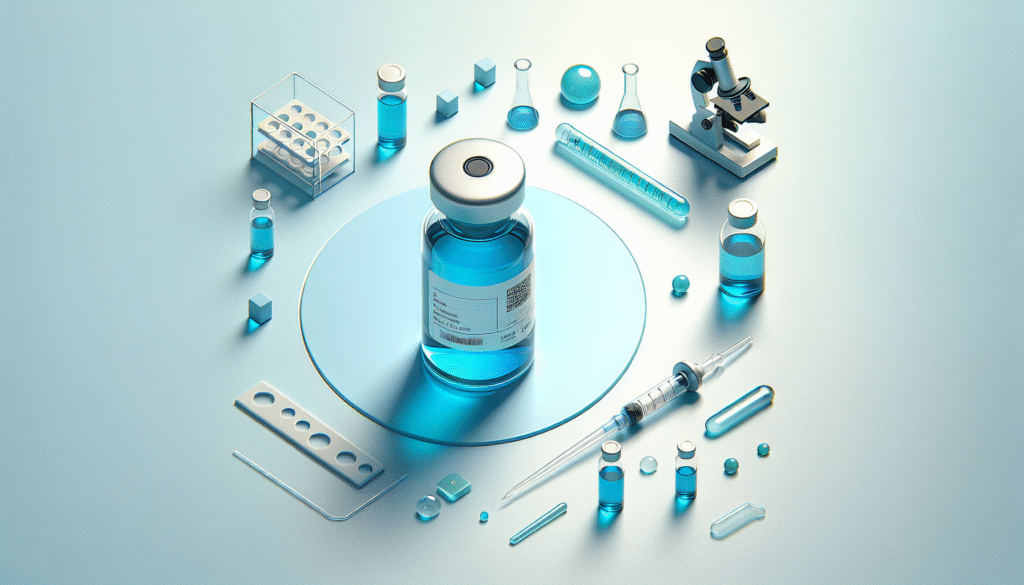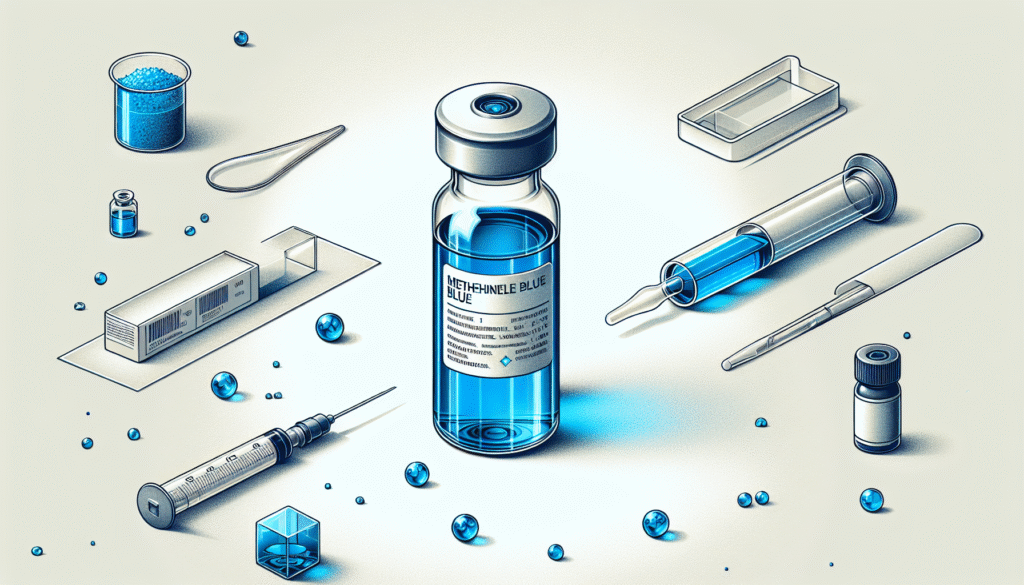
What do you know about Methylene Blue and its applications in various fields? This compound, originally synthesized in the late 19th century, has a rich history and diverse functionality that spans medicine, science, and even art. Understanding its applications can illuminate its importance and potential in both current and future endeavors.
What is Methylene Blue?
Methylene Blue is a synthetic dye that has been widely used in various applications due to its unique properties. Chemically, it is known as thionine and has a molecular formula of C16H18ClN3S. It appears as a dark blue powder when solid, which dissolves in water to give a blue solution. Its vivid color is not just an aesthetic feature; it has practical implications that span across different domains.
Historical Context
The history of Methylene Blue dates back to 1876 when it was first developed by Heinrich Caro, a German chemist. Initially used as a dye in textiles, its applications quickly expanded into medical and biological fields. It has played significant roles in diagnosing conditions, treating major health issues, and even in research regarding cellular processes. Its journey through the decades reflects the evolving understanding of its properties and uses.
Medical Applications of Methylene Blue
Methylene Blue has found multiple applications in medicine, showcasing its versatility. Its chemical properties impart it with unique roles in various treatments and diagnoses.
Antidote for Methemoglobinemia
One of the most vital medical uses of Methylene Blue is its function as an antidote for methemoglobinemia, a condition where hemoglobin is oxidized and unable to carry oxygen effectively. This condition can occur due to certain drugs, chemicals, or even hereditary factors. Methylene Blue converts methemoglobin back to hemoglobin, effectively restoring its oxygen-carrying capacity.
Treatment for Urinary Tract Infections (UTIs)
The compound also has antimicrobial properties, lending itself to treatments for urinary tract infections. When used appropriately, Methylene Blue can disrupt bacterial cell processes, making it a useful adjunct in treating specific infections.
Surgical and Diagnostic Applications
In surgical settings, Methylene Blue is frequently utilized as a dye to identify certain tissues or structures, such as lymph nodes. Its ability to stain tissues enhances visualization during procedures, assisting surgeons in making more informed decisions.
Antimicrobial Properties
Its antimicrobial properties extend beyond UTIs. Research has demonstrated Methylene Blue’s effectiveness against various pathogens, taking advantage of its photodynamic capabilities. This means that when exposed to light, Methylene Blue generates reactive oxygen species that can kill bacteria, making it an intriguing option for treating infections that are resistant to conventional antibiotics.

Methylene Blue in Research and Academia
Research institutions and laboratories have also harnessed the power of Methylene Blue for a variety of applications. Its unique properties make it an excellent candidate for many studies.
Cellular Biology
In cellular biology, Methylene Blue serves as a vital indicator of cellular processes. It can be used to visualize cells and study metabolic processes due to its ability to penetrate cell membranes. In studies concerning mitochondrial function, Methylene Blue has been shown to improve energy production within cells, highlighting its potential as a research tool.
Histological Staining
Methylene Blue is frequently used in histological studies as a staining agent. In histology, scientists prepare tissue samples for examination under a microscope. By employing Methylene Blue to stain certain components, researchers can enhance the visibility of cellular structures, aiding in the diagnosis of diseases or understanding particular biological processes.
Neuropharmacology Studies
In the realm of neuropharmacology, researchers have utilized Methylene Blue to explore neurological treatments. It has been shown to have neuroprotective properties, particularly in conditions like Alzheimer’s disease, where it may help decrease oxidative stress and foster cognitive function.
Bioimaging
In bioimaging applications, Methylene Blue offers a reliable option for visualizing biological tissues and processes. Its fluorescent properties assist in the identification of specific cells or molecules within intricate biological systems, facilitating better understanding and analysis.
Methylene Blue in Veterinary Medicine
Veterinary applications of Methylene Blue mirror those in human medicine, highlighting its value across species and amplifying its role in treating a variety of conditions.
Treatment for Methemoglobinemia in Animals
Similar to humans, animals can also suffer from methemoglobinemia. Methylene Blue proves to be a safe and effective treatment option in veterinary practices, helping restore a healthy level of hemoglobin in pets that encounter this condition due to certain toxins.
Antiseptic and Antimicrobial Uses
In veterinary settings, Methylene Blue is frequently used for its antiseptic and antimicrobial properties. It can be applied to wounds or infections in animals to help control bacterial growth, bolstering healing processes and preventing complications.
Staining for Diagnostic Purposes
Just as in human medicine, veterinarians employ Methylene Blue for diagnostic purposes. Its role as a staining agent aids in surgical procedures by highlighting structures within animal tissues, allowing for better visualization and interventions.

Methylene Blue in Environmental Science
Beyond its medical and veterinary applications, Methylene Blue has also made significant contributions to environmental science.
Water Treatment
Methylene Blue plays a role in water treatment processes aimed at detecting and removing contaminants. Its application in scientific protocols can help assess water quality effectively, ensuring safety and compliance with health regulations.
Environmental Monitoring
Researchers have utilized Methylene Blue in monitoring environments subjected to pollutants. Its ability to absorb toxins makes it a useful indicator for scientists studying the impact of industrial activities on ecosystems.
Methylene Blue in Art and Aesthetics
In the realm of art and aesthetics, Methylene Blue serves not only as a dye but also embodies cultural significance.
Dyes and Pigments
Historically, Methylene Blue has been employed as a dye in various artistic applications, from textiles to visual arts. Its vibrant hue can create striking contrasts and imagery that capture viewers’ attention.
Art Restoration
Methylene Blue can also play a role in art restoration techniques. Conservators may use it as a staining agent to help identify original materials or age in artworks, fostering informed restoration practices that maintain the integrity of artistic expressions.
Safety and Precautions
While Methylene Blue is a valuable agent with numerous applications, awareness of its safety is paramount.
Side Effects and Risks
Methylene Blue is generally considered safe, but it can lead to side effects in some individuals. Possible reactions include headache, dizziness, and gastrointestinal issues. Understanding these risks helps ensure its responsible application.
Drug Interactions
One crucial aspect to consider is Methylene Blue’s potential interactions with certain medications. It can interact with antidepressants, particularly those in the class of monoamine oxidase inhibitors (MAOIs), leading to serious side effects. It’s essential to consult healthcare professionals before using Methylene Blue, particularly in a medical context.
Handling and Storage
When working with Methylene Blue in laboratory or medical settings, proper handling and storage procedures must be followed. Store it in a cool, dry place away from direct sunlight, and utilize appropriate personal protective equipment (PPE) to minimize exposure and risk.
Conclusion
Understanding Methylene Blue’s applications across various domains emphasizes its significance. From medical treatments to environmental monitoring, it embodies versatility and practicality. As you engage with this compound, whether in a research laboratory or a medical setting, you align yourself with a rich history of scientific exploration and innovation. Being informed about its uses, effectiveness, and precautions enables you to make knowledgeable decisions, further contributing to the evolving narrative of this remarkable chemical in both personal and professional realms.
As research progresses and techniques evolve, Methylene Blue’s role may continue to expand. By staying informed about its various applications, you can remain at the forefront of discussions regarding its potential for future advancements in science, medicine, and beyond.